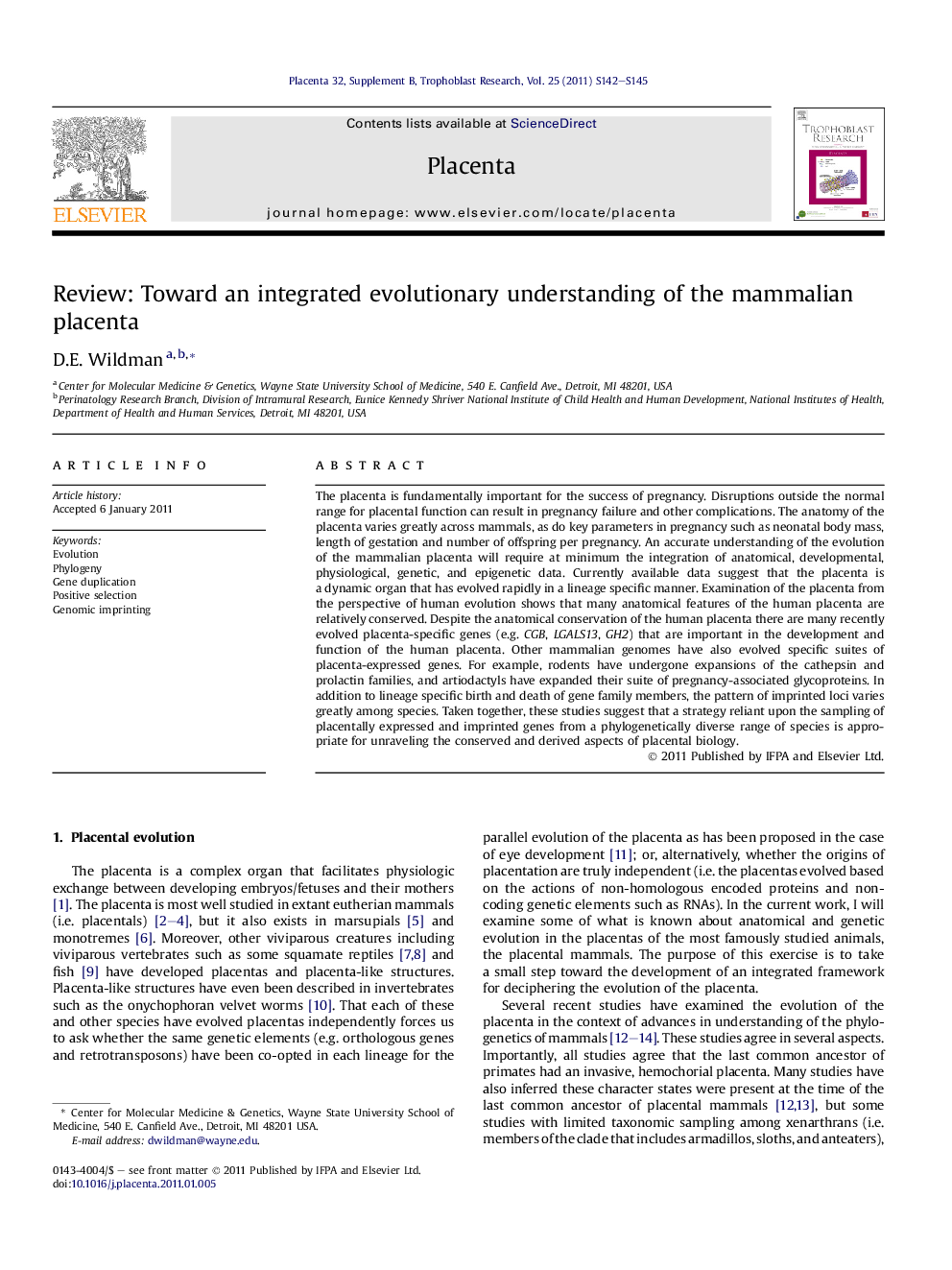| Article ID | Journal | Published Year | Pages | File Type |
|---|---|---|---|---|
| 2789732 | Placenta | 2011 | 4 Pages |
The placenta is fundamentally important for the success of pregnancy. Disruptions outside the normal range for placental function can result in pregnancy failure and other complications. The anatomy of the placenta varies greatly across mammals, as do key parameters in pregnancy such as neonatal body mass, length of gestation and number of offspring per pregnancy. An accurate understanding of the evolution of the mammalian placenta will require at minimum the integration of anatomical, developmental, physiological, genetic, and epigenetic data. Currently available data suggest that the placenta is a dynamic organ that has evolved rapidly in a lineage specific manner. Examination of the placenta from the perspective of human evolution shows that many anatomical features of the human placenta are relatively conserved. Despite the anatomical conservation of the human placenta there are many recently evolved placenta-specific genes (e.g. CGB, LGALS13, GH2) that are important in the development and function of the human placenta. Other mammalian genomes have also evolved specific suites of placenta-expressed genes. For example, rodents have undergone expansions of the cathepsin and prolactin families, and artiodactyls have expanded their suite of pregnancy-associated glycoproteins. In addition to lineage specific birth and death of gene family members, the pattern of imprinted loci varies greatly among species. Taken together, these studies suggest that a strategy reliant upon the sampling of placentally expressed and imprinted genes from a phylogenetically diverse range of species is appropriate for unraveling the conserved and derived aspects of placental biology.
